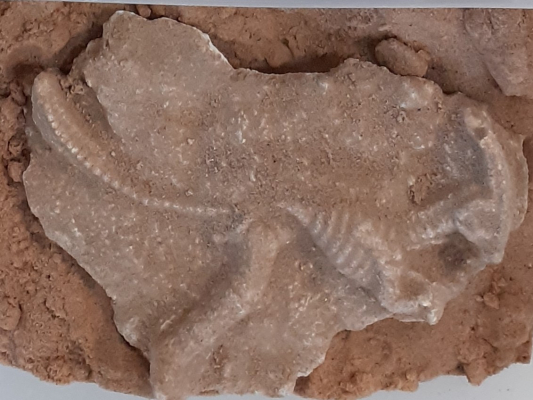Your child has been using our Evolution loans box in school. NUSTEM loans boxes are linked to STEM careers and contain original objects and replicas that can be handled and used as part of classroom activities. While using the resources in the boxes, children get the opportunity to try out and explore some of the skills, techniques, equipment and ideas that STEM professionals use on a day-to-day basis.
Do you know how living things have changed over time and how we know what they looked like in the past? Our Evolution box contains fossil remains from millions of years in the past and plush animal toys for comparisons. We also include some Triop eggs to hatch and grow: a type of shrimp, they’re one of the most ancient species on Earth, hardly changed since the Jurassic period 180 million years ago.
Try this at home
Visit our STEM at home Make a Fossil page to create your own fossil using some sand and plaster of Paris or flour and water solution.
Careers link- what is an archeological science advisor?
Archaeological science is using scientific techniques in archeology. An example is using radiocarbon dating to help us examine the timing of different cultures across the globe. Other scientific methods, from imaging to physical, chemical and biological analysis are used to analyse archaeological materials, as they help to date and find the geographic origins, manufacture and use of artefacts, as well as the ancestry, diet and life-histories of past humans, animals and plants. An archaeological science advisor will work with and share these scientific techniques with archeologists.
Careers link- what is an archeological science advisor?
Your child may have looked at these careers at school.
Each career has 3 personal qualities to focus on. We call these attributes. We want to show children that they already have the skills that they need to have a career in Science, Technology, Engineering or Maths (STEM).





